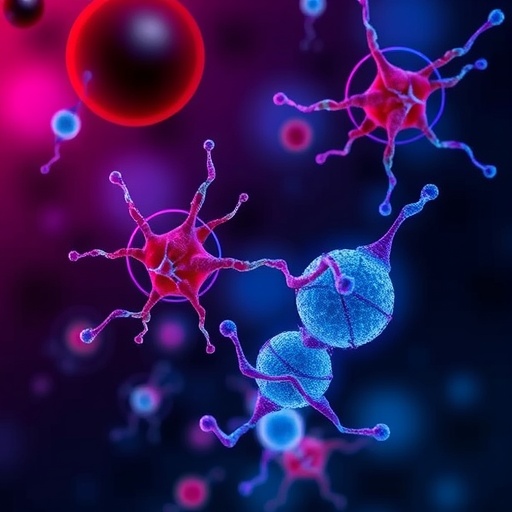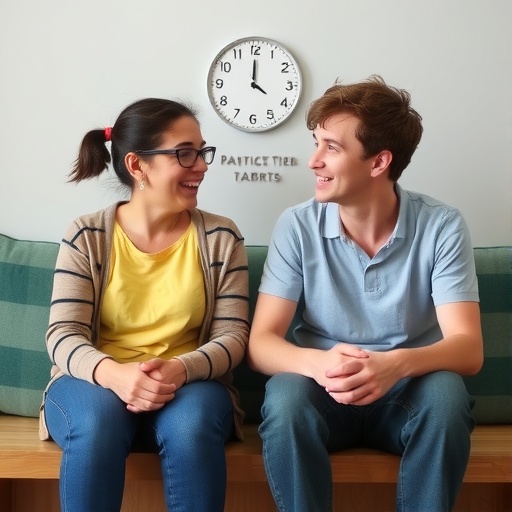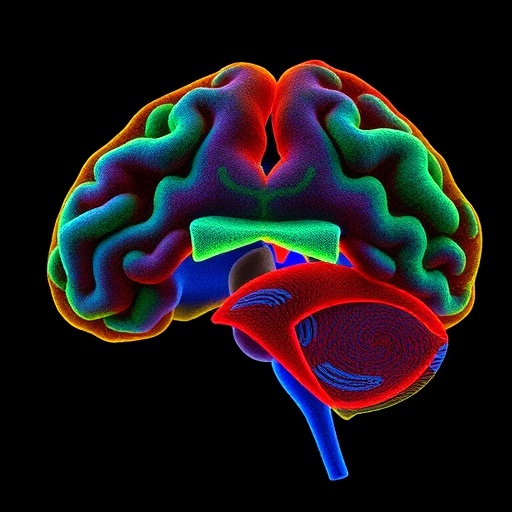
A groundbreaking advancement in gene therapy has emerged from recent research exploring lentiviral (LV) vector-mediated in vivo gene transfer targeting hematopoietic stem and progenitor cells (HSPCs) shortly after birth. This pioneering approach holds promise for treating devastating hereditary hematological and skeletal disorders that manifest early in life, where conventional therapies fall short in halting irreversible disease progression. In particular, researchers have turned their focus to osteopetrosis, a rare genetic bone disease characterized by defective osteoclast function, resulting in abnormally dense and brittle bone, and early bone marrow (BM) failure.
Osteopetrosis arises from inherited mutations that impair the resorptive activity of osteoclasts, specialized cells responsible for breaking down bone matrix to maintain healthy bone remodeling. The failure of osteoclast function disrupts the normal architecture of the BM niche, notably hampering the crucial homing and engraftment of HSPCs. This phenomenon leads to an accumulation of circulating HSPCs (cHSPCs) in peripheral blood due to their inability to properly populate the BM microenvironment, further exacerbating hematopoietic deficiencies. Early intervention is vital since progressive bone marrow failure severely limits treatment alternatives such as bone marrow transplantation.
Capitalizing on the window of opportunity presented shortly after birth, the novel LV gene transfer model strategically harnesses in vivo delivery of corrective genetic material directly into cHSPCs circulating in newborn osteopetrotic mice. This innovative approach bypasses the need for ex vivo manipulation of stem cells, aiming to restore gene function systemically by exploiting the natural trafficking dynamics of HSPCs during postnatal development. The methodology leverages engineered viral vectors adept at safely delivering therapeutic genes into target cells with high efficiency, integrating into the genome to allow sustained gene expression and cellular correction.
.adsslot_cOafKrV1IJ{width:728px !important;height:90px !important;}
@media(max-width:1199px){ .adsslot_cOafKrV1IJ{width:468px !important;height:60px !important;}
}
@media(max-width:767px){ .adsslot_cOafKrV1IJ{width:320px !important;height:50px !important;}
}
ADVERTISEMENT
Experimental results demonstrate that in vivo LV-mediated gene therapy significantly extends the survival of osteopetrotic neonatal mice, a critical proof of concept indication that early postnatal genetic intervention can alter the disease trajectory. Gene-corrected HSPCs engrafted in vivo were shown to differentiate effectively into osteoclasts possessing functional bone resorption capacity. This functional recovery signifies a key milestone, as the restoration of osteoclast activity is essential for the remodeling of aberrant osteopetrotic bone and re-establishing a healthy BM microenvironment conducive to hematopoiesis.
Despite these encouraging outcomes, the study underlines that complete phenotypic rescue remains elusive within the parameters of the current experimental framework. The aggressive and rapidly progressing nature of osteopetrosis in this murine model imposes formidable challenges for full disease reversal. The findings underscore the critical need for optimization of gene transfer efficiency, vector design, and potentially combinatorial therapeutic strategies to achieve complete functional recovery in severe genetic bone diseases.
Intriguingly, the research highlights the mechanistic interplay between the impaired osteoclastogenesis inherent in osteopetrosis and the consequent perturbation of HSPC BM homing. Understanding this bidirectional crosstalk not only informs therapeutic targeting but also deepens the biological insight into how skeletal pathology intricately influences hematopoietic dynamics. These insights could have broader implications for other bone marrow niche disorders where cellular microenvironment and stem cell trafficking are disrupted.
The delivery of LV vectors in vivo shortly after birth presents a paradigm shift from conventional ex vivo gene therapy approaches, which often necessitate hazardous myeloablative conditioning and complex cell processing. By capitalizing on the natural postnatal mobilization of HSPCs into peripheral circulation, this method promises a less invasive, more readily translatable intervention that could be adapted for a spectrum of genetic diseases affecting blood and immune cells.
Furthermore, the robustness of this strategy was evaluated by detailed phenotypic analyses, showcasing the differentiation capacity of gene-corrected HSPCs into functional osteoclasts within the native BM microenvironment. Corrected osteoclasts demonstrated the ability to form resorption lacunae, a hallmark of their bone remodeling functionality, which is critical for reversing the osteopetrotic bone phenotype. This functional evidence consolidates the therapeutic relevance of early in vivo gene transfer for skeletal genetic disorders.
Nonetheless, the rapid disease progression and severity in this osteopetrotic mouse model presented significant obstacles, limiting the extent of therapeutic benefit achievable in a single intervention. Future research avenues include refining vector tropism and expression kinetics, enhancing transduction efficiency in target cells, and timing optimization to maximize the therapeutic window. The exploration of adjunctive agents promoting osteoclast differentiation or BM niche modulation may also amplify gene therapy efficacy.
These findings herald a new frontier in regenerative medicine by demonstrating that early postnatal in vivo gene therapy can penetrate systemically to correct a complex inherited disorder involving both hematopoietic and skeletal systems. They open avenues for clinical translation in treating patients with osteopetrosis and related conditions, aiming to circumvent the constraints posed by conventional therapies that rely heavily on donor availability and pre-conditioning regimens.
The comprehensive study provides a critical foundation for further development of postnatal gene therapy modalities that leverage stem cell trafficking patterns intrinsic to early life stages. It challenges the existing dogma requiring ex vivo manipulations and expands the therapeutic horizon for addressing congenital disorders with lethal or debilitating phenotypes manifesting soon after birth.
In conclusion, this research marks a transformative stride in understanding and harnessing postnatal hematopoietic stem cell biology for gene therapy, demonstrating significant survival benefits and partial phenotypic correction in a severe osteopetrosis mouse model. Continued investigation and technological refinements will be imperative to translate these promising preclinical results into viable clinical interventions that can change the lives of patients born with these devastating genetic diseases.
Subject of Research:
In vivo lentiviral-mediated gene therapy targeting hematopoietic stem and progenitor cells in an osteopetrosis mouse model to correct bone marrow failure and impaired osteoclast function.
Article Title:
In vivo haemopoietic stem cell gene therapy enabled by postnatal trafficking
Article References:
Milani, M., Fabiano, A., Perez-Rodriguez, M. et al. In vivo haemopoietic stem cell gene therapy enabled by postnatal trafficking. Nature (2025). https://doi.org/10.1038/s41586-025-09070-3
Image Credits: AI Generated
Tags: bone marrow failure therapiesearly intervention in genetic diseasesgene therapy for skeletal disordershematopoietic stem and progenitor cellshereditary hematological disordersin vivo gene therapyinnovative gene therapy approacheslentiviral vector-mediated gene transferosteoclast function defectsosteopetrosis gene treatmentperipheral blood stem cellsstem cell trafficking in gene therapy





